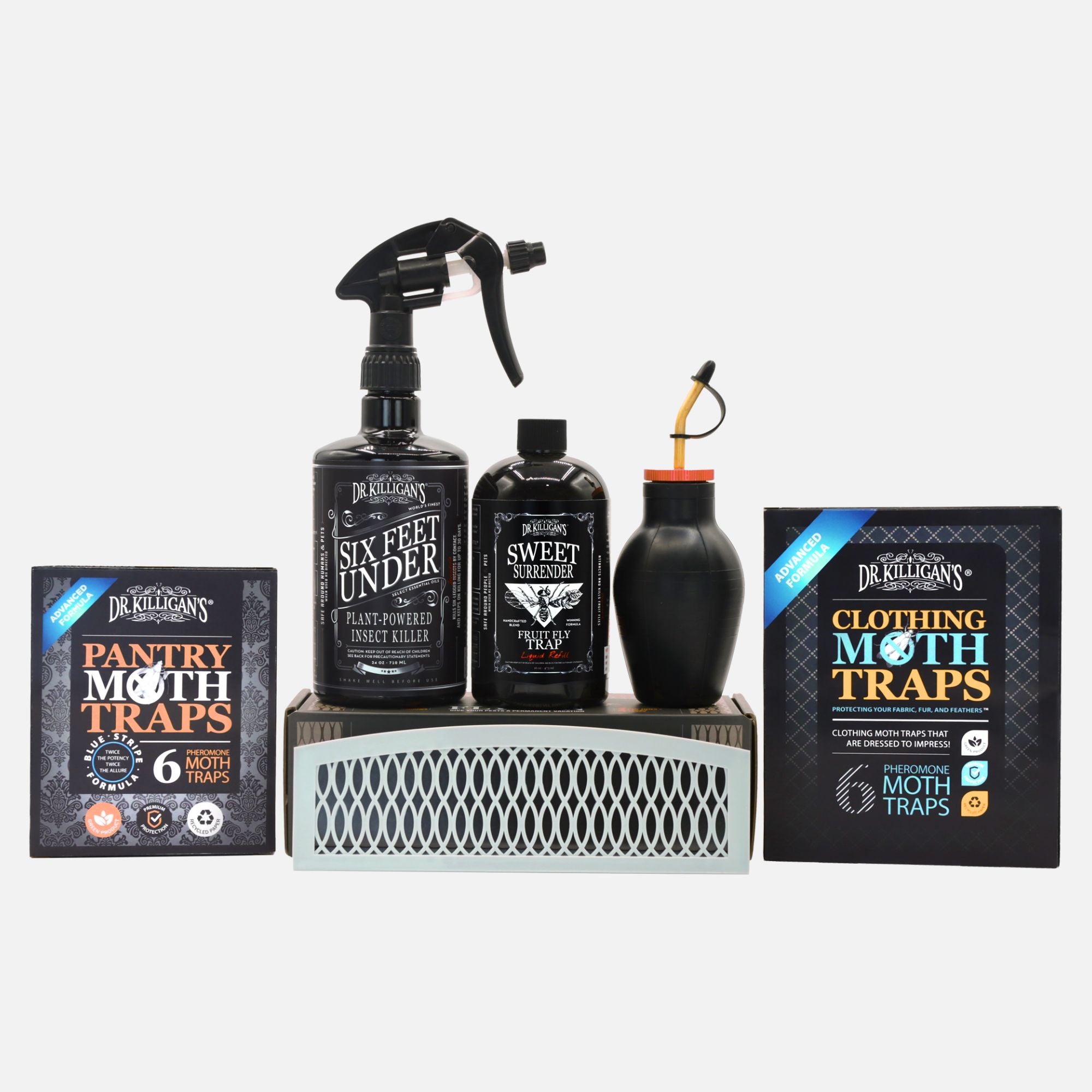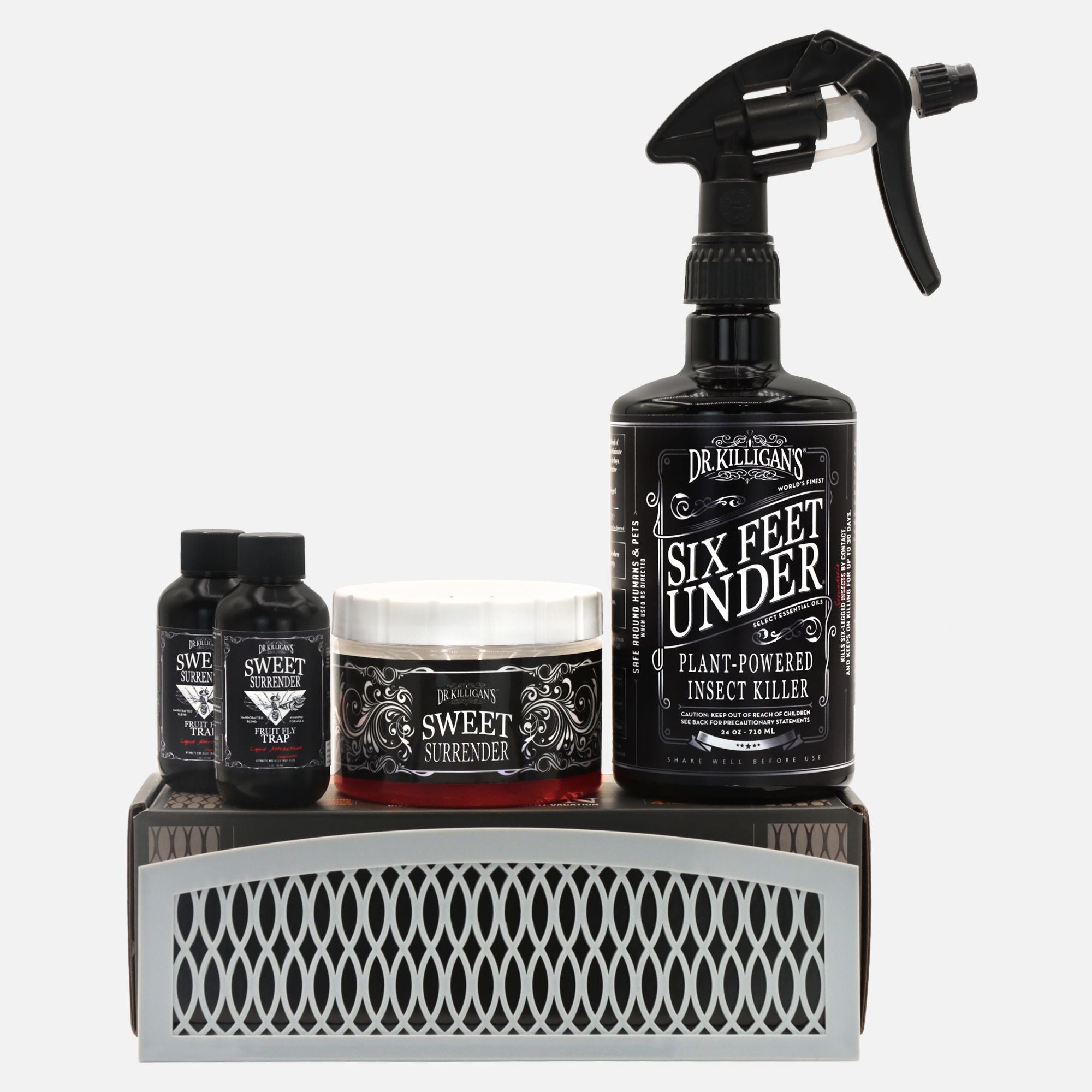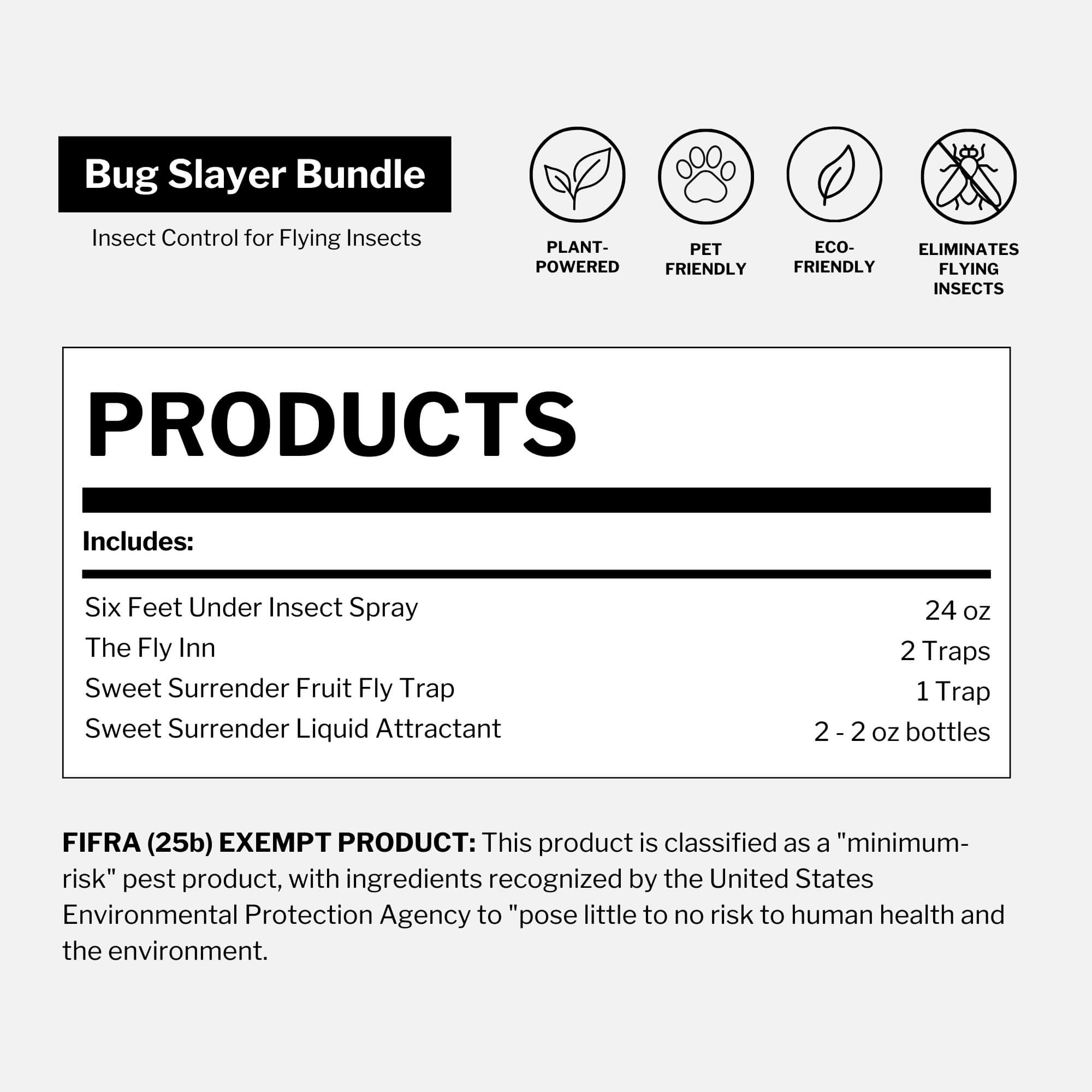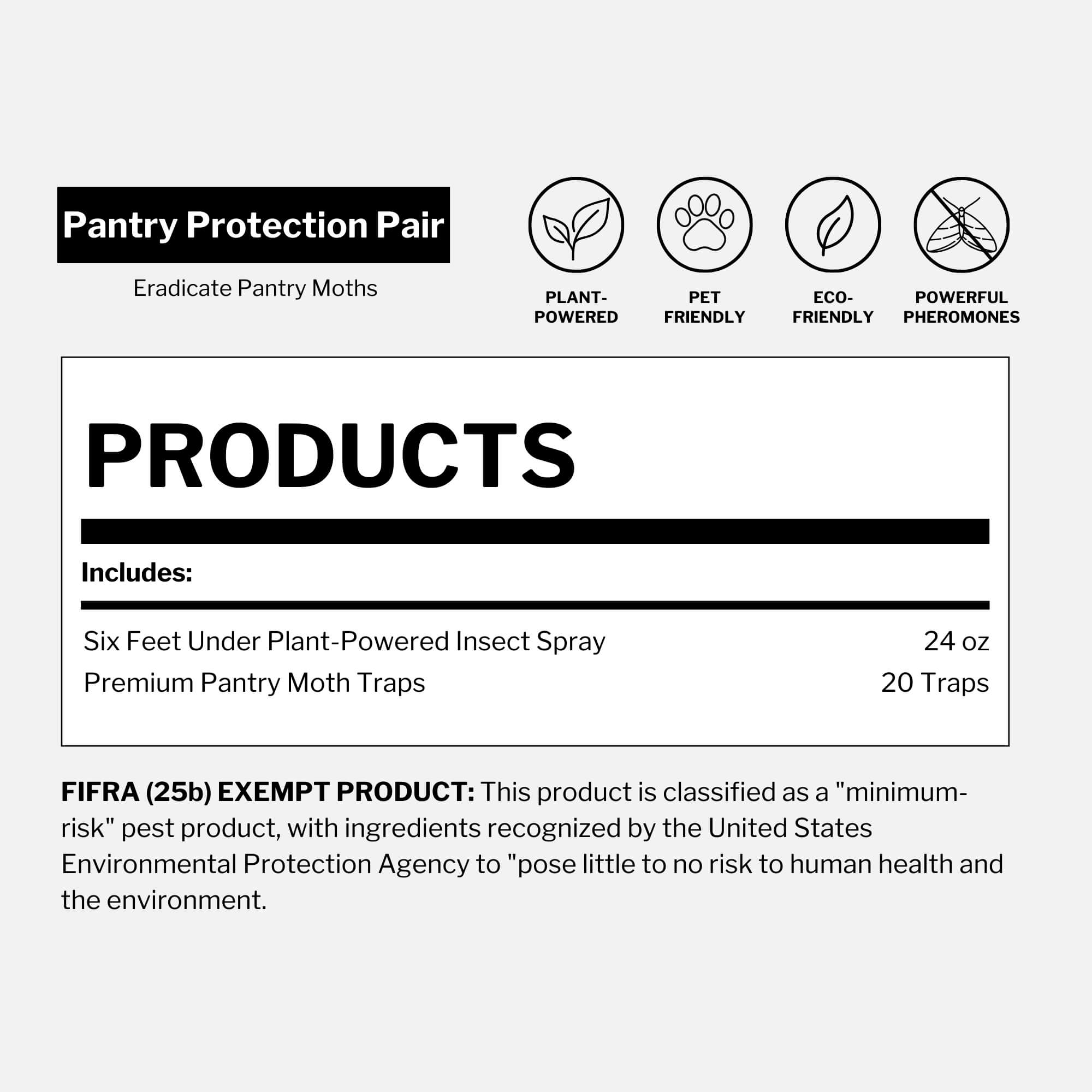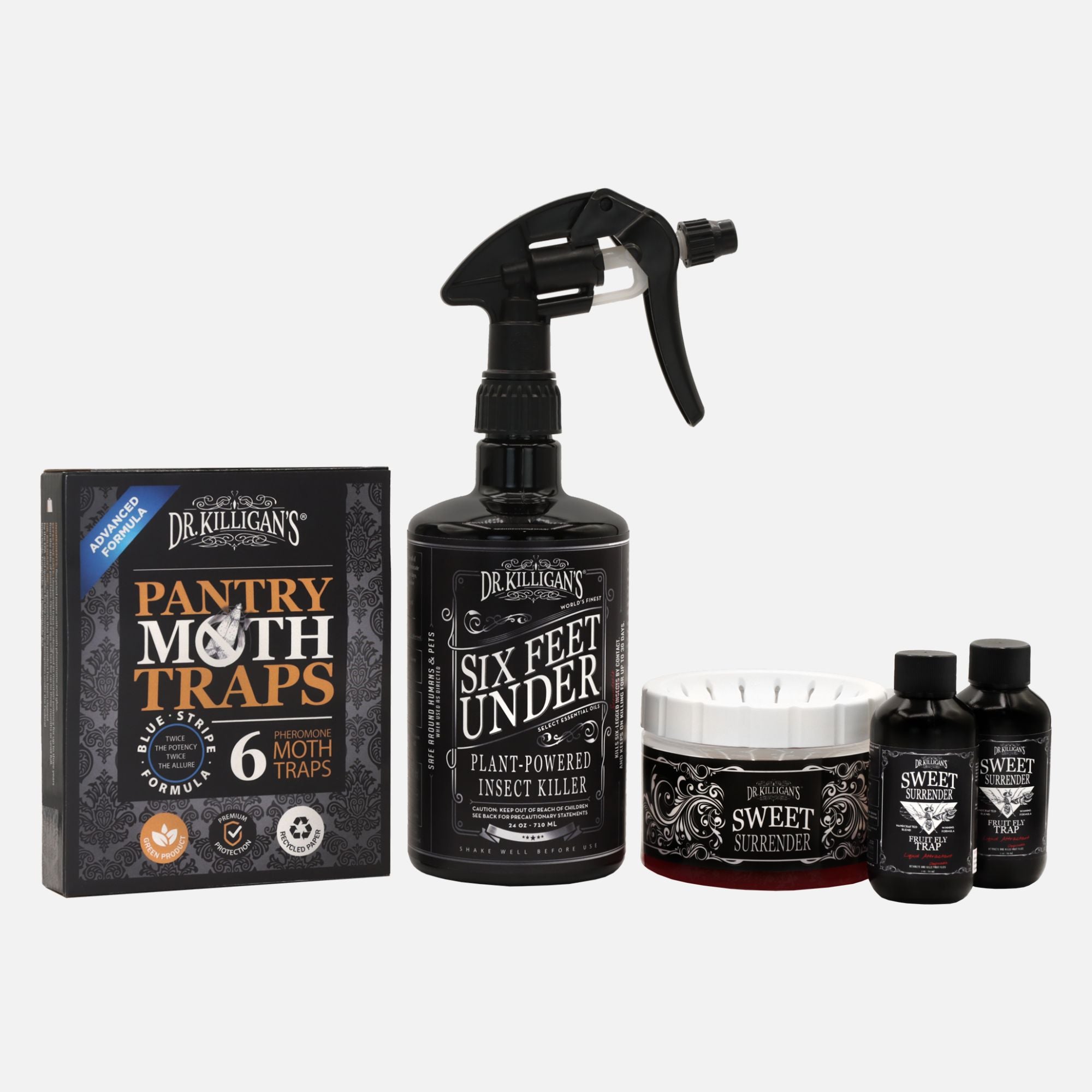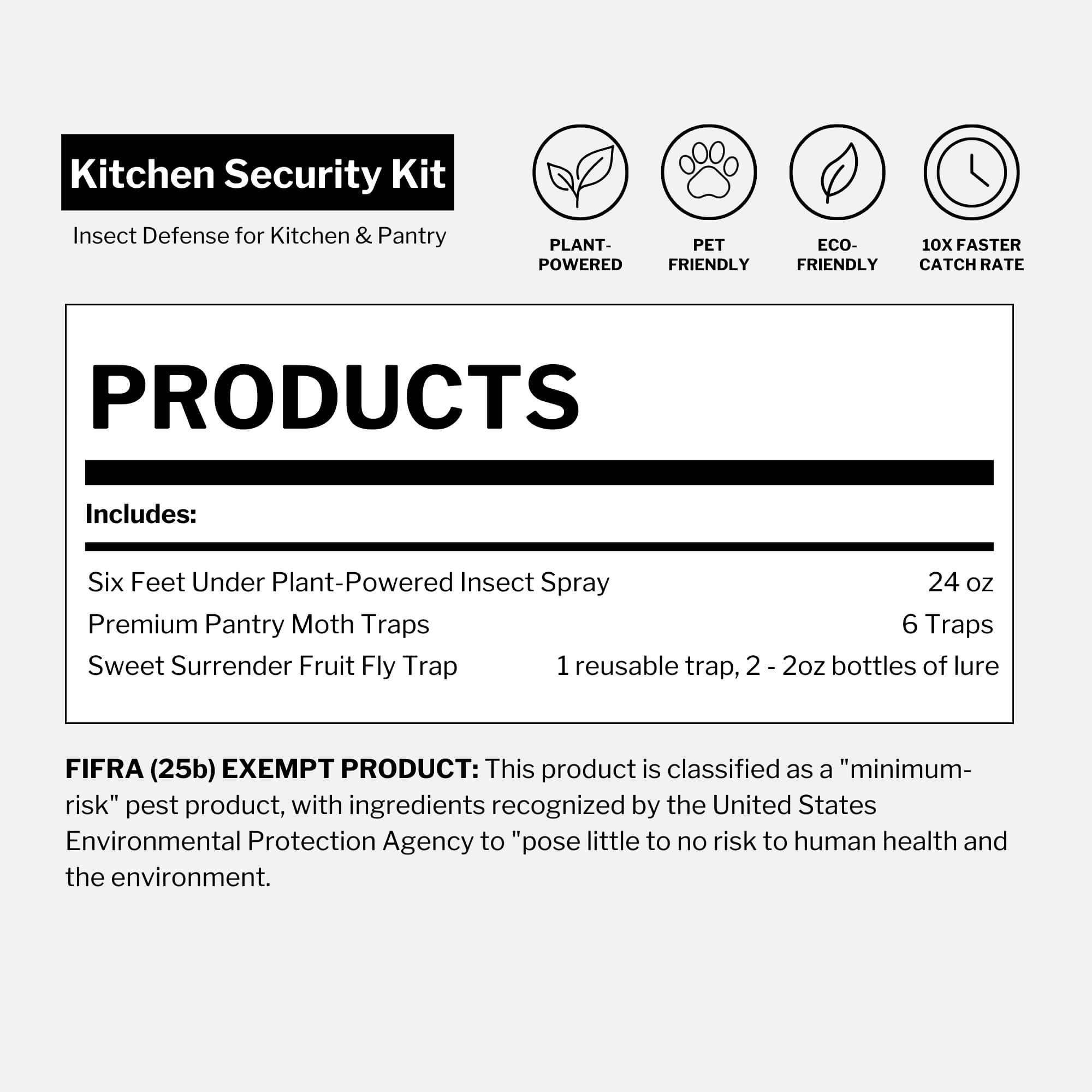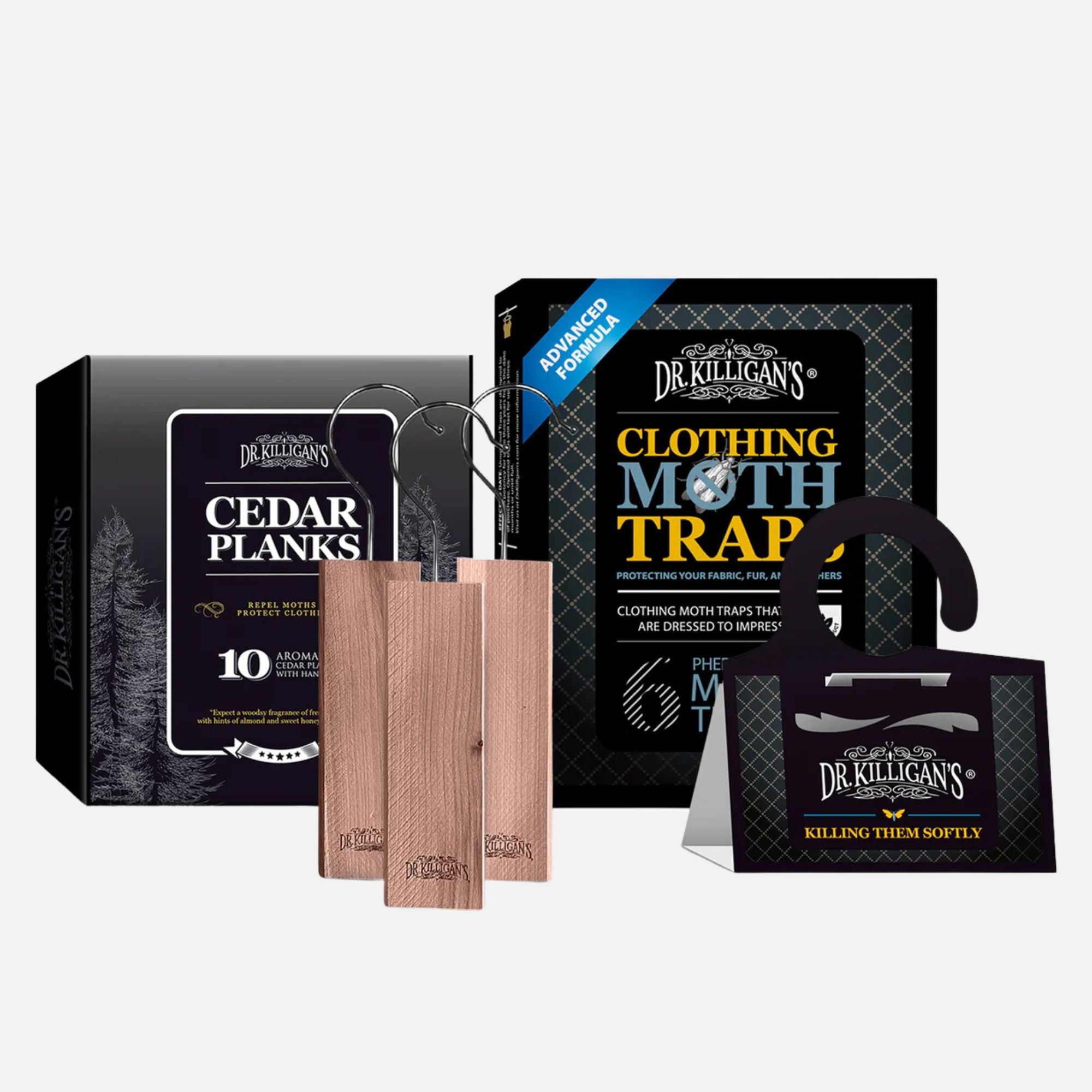Updated on March 20th, 2025
Noticed tiny holes in your favorite wool sweater? Clothes moths could be the culprit. These common pests silently destroy clothing and textiles, especially those made from natural fibers like wool, silk, fur and cashmere.
The two most common species—case-bearing and webbing moths—have different habits but the same destructive goal. Case-bearing moth larvae camouflage themselves in protective cases made from fabric fibers, whereas webbing clothes moth larvae spin hidden silken tunnels to feed undisturbed. Detecting them early is key to stopping an infestation before your wardrobe becomes a feast.
Tip 1: Identify case-bearing and webbing moths
While identifying the specific species is useful, both case-bearing and webbing moths require the same treatment.
Case-bearing moths:

Case-bearing moths (6-8 mm) are golden-brown with three dark spots on their wings. Their larvae, known as case-bearing moth larvae, create portable cases made of fabric fibers for protection.
Webbing moths:
Webbing moths (9-14 mm) are slightly larger, with mottled brown and gray wings. Their larvae, called webbing clothes moth larvae, spin silken tubes in folds of clothing where they feed and grow.
Tip 2: Recognize signs of infestation
To protect your clothing and textiles from infestations, look for visible signs of their presence.

Keep an eye out for adult moths fluttering around infested areas and small, white, worm-like moth larvae crawling on clothing or textiles. You may also notice silk or fibrous cocoons attached to fabrics or tucked into hidden corners.
If an infestation is present, check for tiny, oval-shaped eggs laid in clusters within folds, seams or fabric crevices. Their cream-colored larvae actively feed on natural fibers, leaving irregular holes, chewed edges and thinning fabrics—especially in wool, silk and cashmere. For webbing clothes moth larvae, look for silken webs or tubes on infested textiles or within clothing folds.
Tip 3: Prevent moth infestations
To safeguard your clothing and textiles from moth infestations, follow these preventive measures for proper storage, cleaning and a moth-free environment.
Proper storage:
- Use airtight containers or sealed bags to store seasonal clothing items, especially those made from natural fibers like wool and silk.
-
Place a cedar plank in each airtight bag to help repel moths and protect stored clothing.
- Avoid storing clothing in cardboard boxes or open containers.
Regular cleaning:
- Launder or dry clean clothing before storing for extended periods to remove moth eggs and larvae.
- Pay attention to clothing worn outdoors, as they may carry moth eggs from infested areas.
- Clean and vacuum your closets, drawers and storage spaces regularly to eliminate moth-attracting debris.

- Maintain proper ventilation and moderate humidity levels in your living spaces to deter moths.
- Consider using dehumidifiers in areas prone to moisture buildup.
- Install window screens to prevent moths from entering your home.
- Use Clothing Moth Traps and Cedar Planks correctly. Moth traps lure and capture adult males to reduce reproduction, while Cedar Planks emit a scent that repels moths from settling in storage areas.
Tip 4: Use natural repellents and home remedies
Natural repellents are an effective, non-toxic and eco-friendly way to ward off clothing moths and protect your textiles. Consider using the following home remedies to keep moths at bay:
-
Lavender sachets: Moths dislike the strong scent of lavender. Place dried lavender flowers in small sachets or fabric pouches and tuck them into clothing drawers, closets and storage containers. Replace the sachets every few months or when the scent starts to fade.
- Essential oils: Certain essential oils have moth-repellent properties. Place a few drops of essential oils like cedarwood, lavender, clove or peppermint with water in a spray bottle. Spray this mixture on clothing, textiles and storage areas to create a fragrant and moth-deterring environment. Alternatively, lightly spray Six Feet Under for the same effect, as it contains clove oil and has a 30-day residual effect. (It is recommended to test an inconspicuous spot first.)
- Rosemary and thyme: These herbs contain natural insect-repelling properties. Bundle dried rosemary and thyme together and hang them in closets or place them in storage containers.
Cedar planks for long-term moth prevention
Cedarwood is a natural moth repellent. To keep moths away long-term, refresh the scent of your Cedar Planks by sanding them every six months or spritzing with Cedar Ward to maintain potency.
Tip 5: Eliminate clothing moths safely and effectively
If you suspect an infestation, use clothing moth traps to capture adult males and prevent further reproduction. After reducing the moth population with traps, transition to Cedar Planks for lasting protection. Avoid using traps and cedar together, as traps attract moths while cedar repels them.
If you have an existing clothes moth infestation, take prompt action. Consider these treatments to get rid of clothing moths:
Non-toxic insecticides:

- Diatomaceous earth: This natural powder is made from fossilized remains of algae and is harmless to humans and pets. Using the Insect Buster, puff it in areas where moths are present. The powder damages the moths' outer layer, leading to dehydration and death.
- Dust to Dust: Dust to Dust Plant-Powered Insect Powder is non-toxic and can be used in powder form or as a spray. According to hundreds of side-by-side tests, it is more effective than diatomaceous earth. Apply to infested areas and it will disrupt the moths' digestive system and lead to their demise.
Freezing method:
Vacuuming:
- Regularly vacuum closets and drawers to remove eggs and larvae, disrupting the moth life cycle.
Hot washing:
It's essential to avoid using toxic chemicals that may harm you, your family or your pets. These non-toxic treatments are safe and effective ways to eliminate moths without compromising your health or the environment. Combining these methods with preventive measures will help ensure long-term protection against clothing moth infestations.



